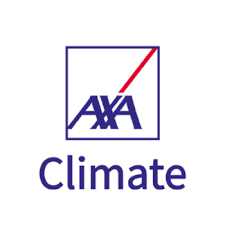Les 25 meilleures formations RSE : notre sélection


Making climate change adaptation local, systemic & possible. Today, we are over 250 people providing support through insurance, training, consulting, and software solutions.
Entreprise en transition
Cette entreprise a entamé sa transition pour améliorer son impact social et environnemental. Seuls les emplois contribuant directement à cette transition sont publiés ici, comme par exemple responsable RSE ou chef de projet bilan carbone.
Nous avons réalisé une mesure d’impact en interne.
Who are we?
Reducing our negative impact on the planet is not enough. AXA Climate challenge is to switch from extractive companies to responsible companies, aiming not only to minimize their footprint on the planet but to create a positive effect on the environment. To that end, we are transforming our business models, our organizations and our collective missions. And this transformation movement drives us.
We are changing the paradigm: our companies are living beings, nested in the living world. To serve this mission we have four lines of business:
Training: digital and scientific content that gets all employees engaged by giving them skills and tools
Consulting: having an impact at the local level through concrete adaptation actions through concrete adaptation actions
Insurance and financing: securing those who adapt and have an impact
Job description
AXA Climate’s Public Sector team is looking for an intern, starting February 2025, who will support in modeling climate hazards over multiple geographical locations, designing parametric insurance solutions for weather-related events, performing value for money analyses for climate risk financing tools and other technical analysis for public sector clients. These include the World Bank and other development banks, international institutions, NGOs and governments.
AXA Climate is looking for a candidate with autonomy and with background in hydraulic engineering, in order to reinforce the technical team within the Public Sector domain. The candidate will be working on floods in developping countries, developping models and proposing adaptation measures.
Key accountabilities:
The main task of the candidate will be to carry out quantitative and qualitative flood risk assessments at specific areas of interest (main focus on urban areas) under the supervision of our technical lead and our hydrologist expert, that include the following tasks:
Hazard assessment: Set up and calibrate/validate flood models to simulate different flood scenarios based on current and future conditions (based on different climate projections), in order to quantify the pluvial and fluvial flood hazard at present and in future time horizons.
Exposure and vulnerability assessment: Characterize the assets exposed to floods and estimate damage functions based on their features.
Risk assessment: Combine hazard, exposure and vulnerability to evaluate the (monetized) flood risk at present and in future time horizons.
Feasibility studies: Propose different flood mitigation measures and assess the benefit (reduction of risk) and cost of implementing such measures, based on the recalculation of the flood risk once the measures are implemented in the flood models.
To carry out these missions, the candidate will use computational hydraulics and hydrology software (SFINCS, WFlow), geospatial analysis software (QGIS) and programming languages (Python), under the guidance of other team members. This can be a great opportunity for the candidate to potentiate such skills.
• Currently enrolled in a MSc (M1/M2) in Engineering, Hydraulic Engineering or Water Management.
• Data science (Python), Statistics. Knowledge in Machine Learning would be a plus.
• Knowledge in hydrodynamic modelling.
• Geospatial data analysis.
• Technical reporting.
• Fluency in English or French. Spanish would be appreciated.
Tu souhaites te réorienter mais tu ne sais pas par où commencer ? Pas de panique, on te propose une sélection de formations aux métiers de la transition écologique et solidaire !
Tu ne t'épanouis plus dans ton travail, et tu envisages de changer de profession pour trouver plus de sens dans ta vie professionnelle ? Découvre les ressources pour t'aider à réflechir à un projet de reconversion et trouver ta voie.